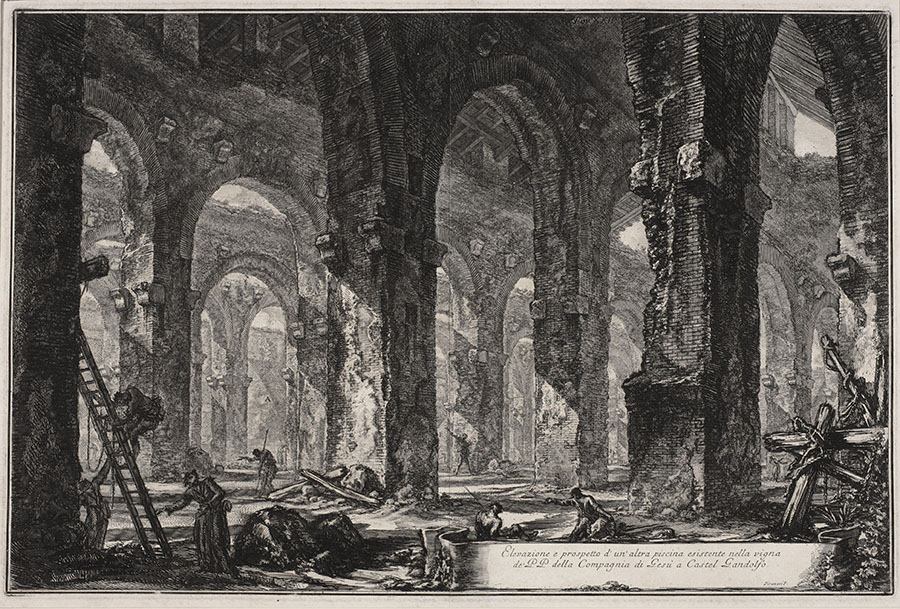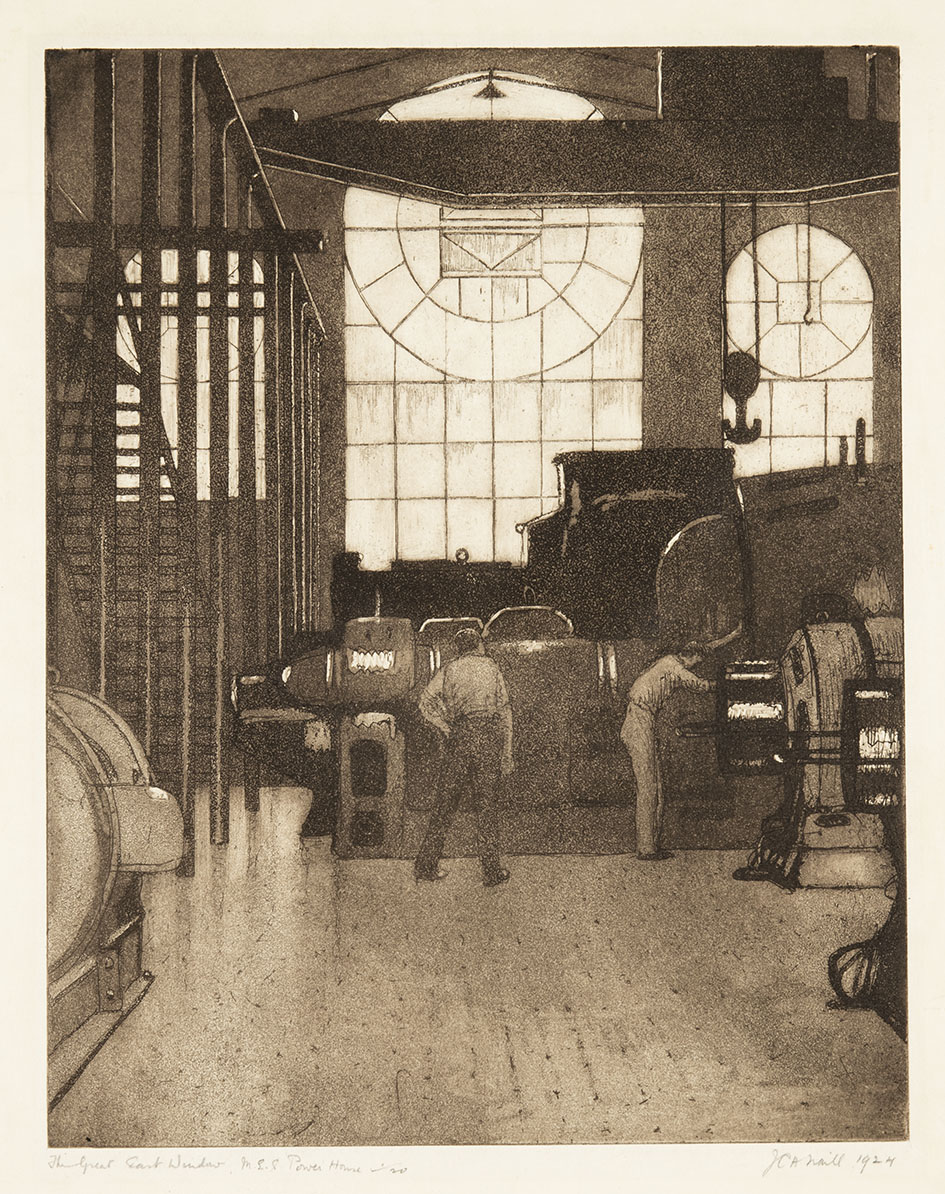INTERIOR ARCHITECTURE
INTERIOR ARCHITECTURE
The vast, ancient ruins delineated by the eighteenth-century artist and antiquarian Giovanni Battista Piranesi both preserve and transcend history. Driven by the fascination with ancient Greek and Roman culture in his age, as well as helping to inspire it, Piranesi’s dramatic prints were purchased by wealthy aristocrats as mementos of the Grand Tour and as a poetic evocation of the passing of great civilisations. Over centuries, the classical ruins had been plundered for building materials and neglected to the point of obliteration. What remained needed protecting, and the powerful images Piranesi produced helped foster appreciation and preservation of the ruins.[1]
The figures of everyday Italian workers appearing in the scenes drew the monumental past into Piranesi’s present, where the decaying architecture was a mere background to quotidian life. The small foreground figures introduce human subjectivity into the oversized architecture. In the etching of a reservoir in Castel Gandolfo, the repeated arches and crumbling stone pillars form a rhythmic recession from darkness to light, as if history were fading from memory into dream. The workmen with their ladders, ropes, and piles of rubble ignore the immensity of the structure’s progression through space. Yet, the rounded arches align with the interior structures of vision and sensation: the eye sockets and brain cavity of the skull. Perception of depth and distance define consciousness, while repetition induces trance-like meditative states.[2] Time is stilled, and the human imagination can roam.
Segmented, arched windows dominate the dusky interior in Jessie Traill’s etching The Great East Window, M.E.S. Power House (1924). Piranesi’s towering arches are here domesticated, but the plunge into light is more abrupt. The dark silhouettes of workers and machinery confuse figure and ground, so that light becomes material and objects dissolve into shadow. Here time is not only stilled, but reversed, so that we imagine time flowing back into the bright flare of its beginnings.
Anne Taylor
[1] Angelo Lo Conte, “Piranesi: Discovering Antiquity,” in The Piranesi Effect, ed. Kerrianne Stone and Gerard Vaughan (Sydney: Newsouth Publishing, 2015), 80–96.
[2] Barbara Maria Stafford, Echo Objects (Chicago: University of Chicago Press, 2007) 109-122.
Copyright © All rights reserved



